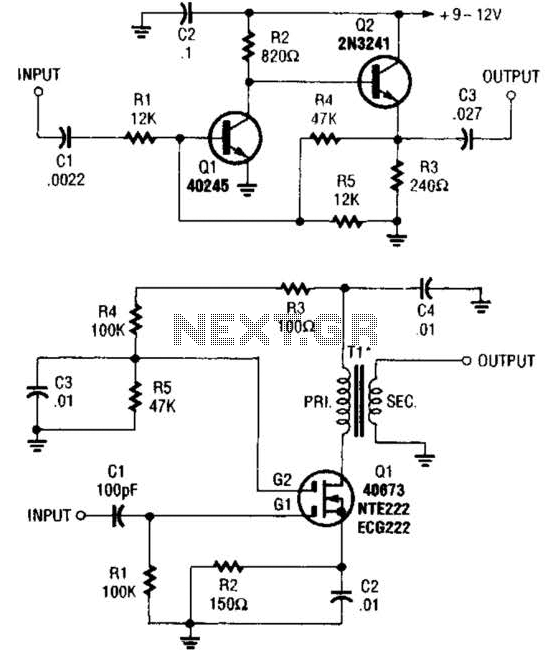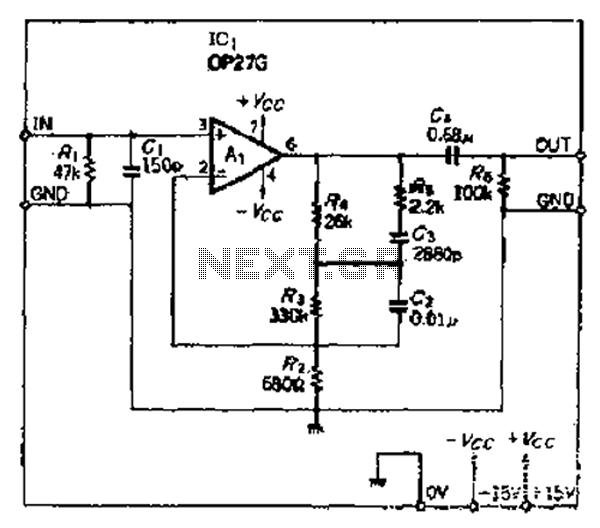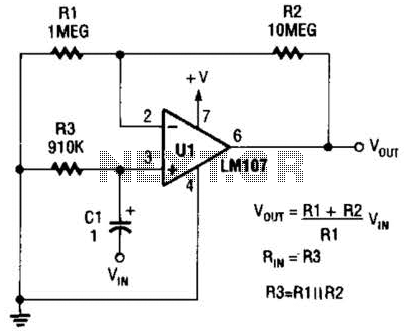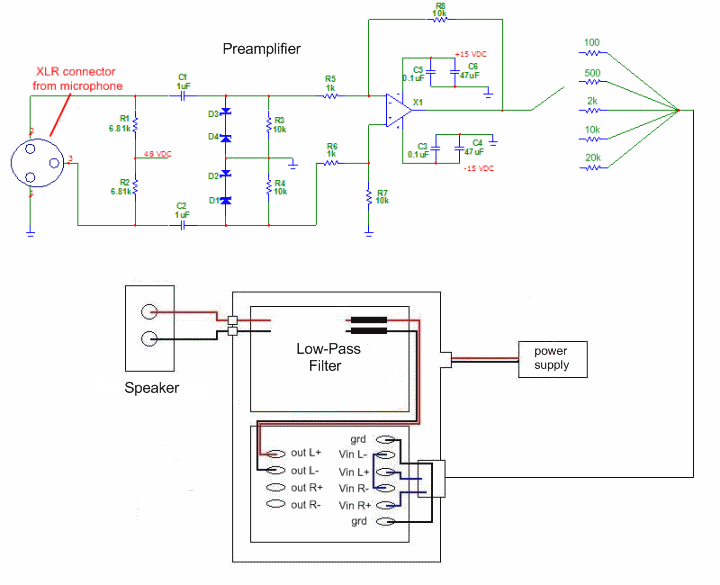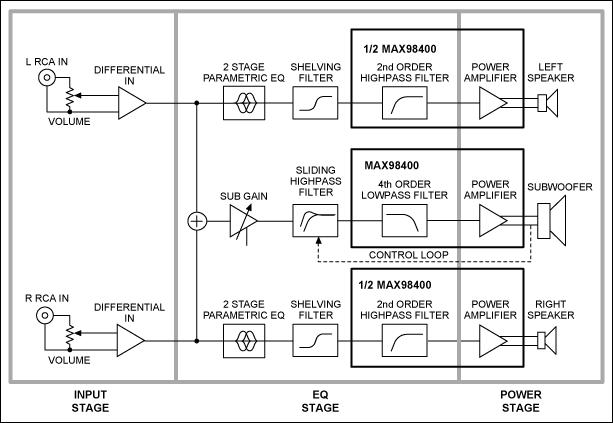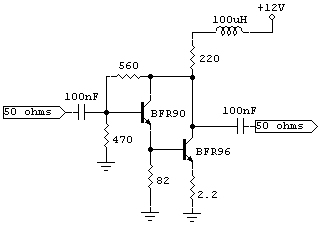
Baxandall Tone-Control Audio Amplifier
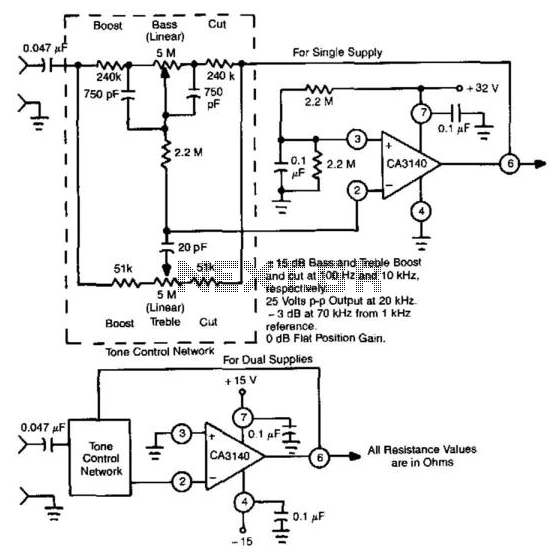
This circuit utilizes the high slew rate, high input impedance, and high output-voltage capability of the CA3140 BiMOS operational amplifier. It also offers mid-band unity gain using standard linear potentiometers.
The circuit design leverages the characteristics of the CA3140 BiMOS operational amplifier, which is known for its exceptional performance in various applications. The high slew rate of the CA3140 allows for rapid changes in output voltage in response to input signal variations, making it suitable for applications requiring fast signal processing. The high input impedance minimizes loading effects on preceding stages, ensuring that the circuit can interface effectively with other components without degrading signal integrity.
The implementation of mid-band unity gain is achieved through the use of standard linear potentiometers. This feature allows for precise control of the gain in a specific frequency range, making the circuit adaptable to various signal conditioning tasks. By adjusting the potentiometer, the user can fine-tune the gain, which is particularly useful in audio applications or where signal amplification needs to be optimized.
Overall, the combination of the CA3140’s specifications and the inclusion of linear potentiometers provides a versatile circuit capable of delivering reliable performance in diverse electronic applications, from audio processing to instrumentation. This circuit exploits the high slew rate, high input impedance, and high output-voltage capability o f CA3140 BiMOS op amp. It also provides mid-band unity gain with standard linear potentiometers. 🔗 External reference
The circuit design leverages the characteristics of the CA3140 BiMOS operational amplifier, which is known for its exceptional performance in various applications. The high slew rate of the CA3140 allows for rapid changes in output voltage in response to input signal variations, making it suitable for applications requiring fast signal processing. The high input impedance minimizes loading effects on preceding stages, ensuring that the circuit can interface effectively with other components without degrading signal integrity.
The implementation of mid-band unity gain is achieved through the use of standard linear potentiometers. This feature allows for precise control of the gain in a specific frequency range, making the circuit adaptable to various signal conditioning tasks. By adjusting the potentiometer, the user can fine-tune the gain, which is particularly useful in audio applications or where signal amplification needs to be optimized.
Overall, the combination of the CA3140’s specifications and the inclusion of linear potentiometers provides a versatile circuit capable of delivering reliable performance in diverse electronic applications, from audio processing to instrumentation. This circuit exploits the high slew rate, high input impedance, and high output-voltage capability o f CA3140 BiMOS op amp. It also provides mid-band unity gain with standard linear potentiometers. 🔗 External reference
